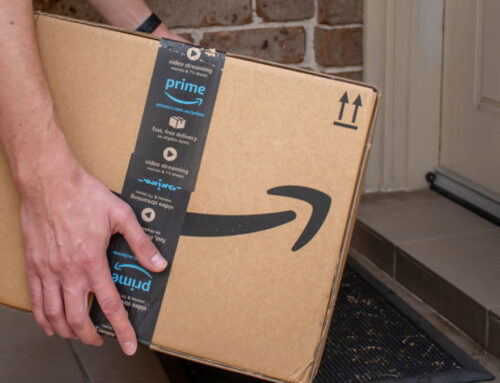Cannabis extract proves to be highly effective at killing mosquitoes
June 17, 2025
Every year, mosquito-borne diseases cut short more than a million lives across the globe, outpacing every other animal threat to humanity. The rising toll has public-health teams scrambling for fresh combat tools, especially as traditional chemical sprays lose their edge.
That loss stems from two hard truths. First, the very pyrethroid insecticides that once worked wonders now linger in soil and water, nudging delicate ecosystems off balance.
Second, mosquitoes adapt fast. Larvae soaking in tainted puddles and adults drifting through treated neighborhoods increasingly shrug off doses that once killed them.
Controlling the pests at their waterborne stage is vital, yet options that stay potent without harming everything else remain limited.
Recent research published in the journal Insects points to a solution hiding in plain sight: the hemp plant, Cannabis sativa.
After air-drying and grinding ordinary hemp leaves, scientists at The Ohio State University led by Erick Martinez Rodriguez extracted cannabidiol (CBD) and added the concentrate to cups of water teeming with yellow fever mosquito larvae.
Within 48 hours, both a strain that laughs at common insecticides and a non-resistant strain were wiped out.
“Mosquitoes are one of the deadliest animals in the world, mainly because as adults they serve as vectors of disease,” Rodriguez explained.
Two important findings jumped out. The first was total mortality: every mosquito larva exposed to sufficient CBD died by the two-day mark, regardless of its genetic armor.
The second was efficiency. While industrial chemicals often push resistance higher with every generation, CBD’s effect cut straight through those defenses. Doses varied, but even modest concentrations proved lethal to all mosquito larvae.
“If you compare the amount of hemp extract needed to kill 50 % of the population to other synthetic conventional insecticides, it is on the high side, but when you compare it side by side to other natural extracts we have tested in our lab, only a relatively low amount is required to produce high mortality values in larvae,” said Martinez Rodriguez.
Chemical sleuthing showed that CBD dominated the hemp extract, and terpene fractions did little damage on their own.
Larvae were judged dead once they stopped moving under a gentle nudge, confirming the cannabinoid’s direct impact on vital systems.
Insects lack the endocannabinoid receptors that give CBD its wellness reputation among humans, so the compound must strike different molecular targets – possibly ion channels that govern nerve impulses or enzymes tied to muscle control.
Whatever the route, CBD skirts the metabolic tricks that shield many larvae from pyrethroids.
Hemp is no niche crop. U.S. farmers planted about 27,680 acres in 2023, and the total value of hemp products topped $291 million.
Leaves, often left as low-value waste after flowers and seeds are harvested, could become raw material for larvicides.
Turning those leaf cast-offs into mosquito-control pellets would give growers an extra revenue stream while trimming refuse piles.
The crop’s adaptability sweetens the deal. Hemp thrives across a wide climate range, grows quickly, and rarely needs harsh pesticides of its own.
Rural communities looking to diversify incomes and urban growers cultivating indoor micro-hemp could both feed a supply chain aimed at vector-control programs from Texas to Tanzania.
Field trials must still answer hard questions: How long does CBD linger in ponds? Does it bother tadpoles, fish fry, or helpful insects?
Early lab work hints at selectivity, yet natural habitats are complex. Regulators will demand data showing that CBD pellets, briquettes, or slow-release films silence mosquito larvae without tipping aquatic ecosystems.
A second layer of testing will match different hemp strains for efficacy. Plants bred for fiber deliver more stalk than cannabinoid, while floral varieties boast richer CBD profiles.
Selecting cultivars that maximize larvicidal punch and minimize unwanted compounds will keep costs down and environmental margins wide.
Scientists plan to refine dosage, explore formulations that stick to the water’s surface, and probe how CBD interacts with other biocontrol measures like Bacillus thuringiensis israelensis. Combining modes of action could slow resistance even further.
Teams will also map out manufacturing pipelines – picture hemp-leaf extract concentrated at regional facilities, then shipped as shelf-stable granules to mosquito-control districts.
Policy makers, meanwhile, need clear guidelines. Approving a botanical larvicide means balancing urgent disease threats against conservation goals. Transparent monitoring and community engagement will help keep public trust.
Hemp-derived CBD will not single-handedly end malaria, dengue, or Zika. Yet the discovery that a familiar wellness compound doubles as a larval assassin widens the playbook.
By uniting agriculture, chemistry, and entomology, researchers have opened a practical path toward safer mosquito control.
If larger-scale tests confirm the promise seen in the lab, those humble hemp leaves could soon guard countless backyard birdbaths, drainage ditches, and rice paddies – one cup of water at a time.
The full study was published in the journal Insects.
—–
Like what you read? Subscribe to our newsletter for engaging articles, exclusive content, and the latest updates.
Check us out on EarthSnap, a free app brought to you by Eric Ralls and Earth.com.
—–
Search
RECENT PRESS RELEASES
Related Post





